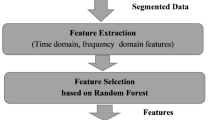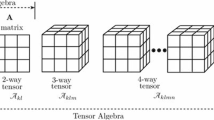Abstract
The recognition process of 3D face in cloud environment is vulnerable to the interference of external environment, resulting in poor recognition accuracy, therefore, a 3D face recognition method in cloud environment based on semi supervised clustering algorithm is proposed in this paper, after Harris feature points of successful matching of a 2D image are mapped into 3D space, surface fitting method estimated by the least squares is used to extract the curvature information corresponding to feature points, maximum and minimum principal curvatures are constructed as the final curvature eigenvector. The semi supervised clustering algorithm is introduced to perform the cluster judgement to decide if the sample is labeled 3D face sample. According to the class probability or membership degree of 3D face samples to preselect partial samples, labeled 3D face samples training classifier is established, after the second-selection is processed for the preselected 3D face samples according to the classification confidence, the selected results and the predicted labels are added into labeled samples. The iterations are applied to the semi supervised clustering algorithm to cluster the original labeled samples, new labeled samples and label the rest of the unlabeled samples,. The iterative process is repeated until all samples have been marked, and the labeled samples are identified 3D face data. The experiment combined proposed method with cloud computing platform, the experimental results show that the proposed method has high recognition accuracy and efficiency.








Similar content being viewed by others
References
Allan P, Helio P, William Robson S et al (2015) Face spoofing detection through visual codebooks of spectral temporal cubes.[J]. IEEE Trans Image Process 24(12):4726–4740
Alok AK, Saha S, Ekbal A (2015) A new semi-supervised clustering technique using multi-objective optimization[J]. Appl Intell 43(3):633–661
Al-Osaimi FR (2015) A novel multi-purpose matching representation of local 3D surfaces: a rotationally invariant, efficient, and highly discriminative approach with an adjustable sensitivity[J]. IEEE Trans Image Process 25(2):658–672
Burghardt T (2015) Correspondence, matching and recognition[J]. Int J Comput Vis 113(3):161–162
Diaz-Valenzuela I, Vila-Miranda M, Martin-Bautista M (2015) On the use of fuzzy constraints in semi-supervised clustering[J]. IEEE Trans Fuzzy Syst 1–1. doi:10.1109/TFUZZ.2015.2466085
Drira H, Amor BB, Srivastava A, Daoudi M, Slama R (2013) 3D face recognition under expressions. Occlusions Pose Variat 35(9):2270–2283
Elaiwat S, Bennamoun M, Boussaid F et al (2015) A Curvelet-based approach for textured 3D face recognition[J]. Pattern Recogn 48(4):1235–1246
Guerra L, Benavides-Piccione R, Bielza C et al (2015) Semi-supervised projected clustering for classifying GABAergic Interneurons[J]. Artif Intell Med 28(4):882–917
Huang S, Wang H, Li T et al. (2015) Constraint co-projections for semi-supervised co-clustering[J]. IEEE Trans Cybernet 1–12. doi:10.1109/TCYB.2015.2496174
Jae-Gi L, Su-Jin J, Hyung-Jin L et al (2015) Quantitative anatomical analysis of facial expression using a 3D motion capture system: application to cosmetic surgery and facial recognition technology.[J]. Clin Anat 28(6):735–744
Lei Y, Guo Y, Hayat M et al (2015) A two-phase weighted collaborative representation for 3D partial face recognition with single sample[J]. Pattern Recogn 52:218–237
Li H, Huang D, Morvan JM et al (2015) Towards 3D face recognition in the real: a registration-free approach using fine-grained matching of 3D keypoint descriptors[J]. Int J Comput Vis 113(2):128–142
Liang R, Shen W, Li XX et al (2015) Bayesian multi-distribution-based discriminative feature extraction for 3D face recognition[J]. Inf Sci 320(C):406–417
Mehrkanoon S, Agudelo OM, Suykens JAK (2015) Incremental multi-class semi-supervised clustering regularized by Kalman filtering[J]. Neural Netw 71(C):88–104
Moeini A, Moeini H (2015) Pose-invariant gender classification based on 3D face reconstruction and synthesis from single 2D image[J]. Electron Lett 51(10):760–762
Mohammadzade H, Hatzinakos D (2013) Iterative closest normal point for 3D face recognition. IEEE Trans Pattern Anal Mach Intell 35(2):381–397
Nighat N, Muhammad T, Sahar F et al (2015) ChromClust: a semi-supervised chromatin clustering toolkit for mining histone modifications interplay.[J]. Genomics 106(6):355–359
Samad MD, Iftekharuddin KM (2016) Frenet frame-based generalized space curve representation for pose-invariant classification and recognition of 3-D face[J]. IEEE Trans Human-Mach Syst 1–12. doi:10.1109/THMS.2016.2515602
Serino A, Sforza AL, Kanayama N (2015) Tuning of temporo-occipital activity by frontal oscillations during virtual mirror exposure causes erroneous self-recognition[J]. Eur J Neurosci 42(8):2515–2526
Sh. Ahmed A, Guirguis S, Rashad ZM (2015) Enhancing 3D face recognition based PCA by using rough set theory[J]. J Am Acad Dermatol 114(10):10–14
Slama R, Wannous H, Daoudi M et al (2015) Accurate 3D action recognition using learning on the Grassmann manifold[J]. Pattern Recogn 48(2):556–567
Sukno FM, Waddington JL, Whelan PF (2015) 3-D facial landmark localization with asymmetry patterns and shape regression from incomplete local features.[J]. IEEE Trans Cybernet 45(9):1717–1730
Tie Y, Guan L (2013) Automatic landmark point detection and tracking for human facial expressions. J Imag Video Process 2013:8. doi:10.1186/1687-5281-2013-8
Tuan TM, Ngan TT, Son LH (2016) A novel semi-supervised fuzzy clustering method based on interactive fuzzy satisficing for dental x-ray image segmentation[J]. Appl Intell 1–27. doi:10.1007/s10489-016-0763-5
Wang X, Ruan Q, Jin Y, An G (2014) Expression robust three-dimensional face recognition based on Gaussian filter and dual-tree complex wavelet transform. J Intell Fuzzy Syst 26:193–201
Author information
Authors and Affiliations
Corresponding author
Rights and permissions
About this article
Cite this article
Li, C., Tan, Y., Wang, D. et al. Research on 3D face recognition method in cloud environment based on semi supervised clustering algorithm. Multimed Tools Appl 76, 17055–17073 (2017). https://doi.org/10.1007/s11042-016-3670-1
Received:
Revised:
Accepted:
Published:
Issue Date:
DOI: https://doi.org/10.1007/s11042-016-3670-1




